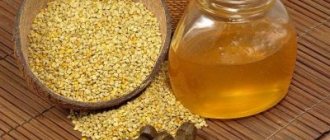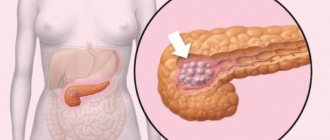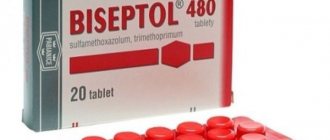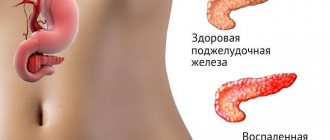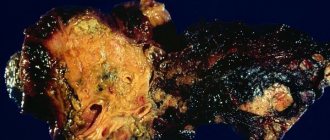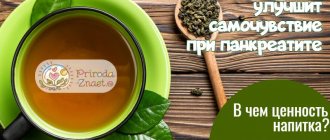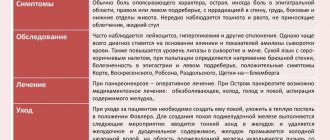Many pathologies of internal organs have identical manifestations: bitter taste, nausea, bloating, constipation, pain in the right hypochondrium. As a rule, people blame everything on the liver and begin to actively engage in cleansing activities on their own. This approach is extremely reckless, since such symptoms may be associated with diseases of the pancreas.
As you know, the large digestive gland, located behind the stomach, performs important functions in the body: it is responsible for metabolic processes, digestion, and the production of insulin and glucagon. Any violations are fraught with negative consequences. It is advisable to undergo diagnostics to determine the stage of the disease. Lack of proper therapy or an incorrectly selected treatment method will only worsen the problem.
In addition to traditional methods, there are alternative ones. For example, oats are used to treat the pancreas at an early stage in order to eliminate inflammation and improve the functioning of the organ. Pancreatitis is not a death sentence; it can be defeated if you start fighting the disease in a timely manner. The material will present folk recipes, proven by practice.
The benefits of cereal
Everything ingenious, as we know, is simple. In this case, we will talk about how oats help. This cereal has long been used to treat the pancreas due to its cleansing and enveloping properties. The plant is a natural healer and an excellent absorbent; it is recommended for various ailments, as well as for those wishing to lose weight. The fodder crop is held in high esteem by traditional healers; it is indispensable in the fight against inflammation. Gently cleanses the intestines, removes toxins, heavy metals and toxic substances accumulated over many years.
Milk and dairy products during remission
During the period of stable remission, milk and dairy products, as a source of easily digestible animal proteins, should be present daily in the diet of patients with pancreatitis. Up to 10 gr. butter per day (added to dishes), low-fat cottage cheese, 1% kefir (which, however, can now be replaced with any other low-fat product: yogurt, Varenets, fermented baked milk, etc.). Porridges, soups and omelettes without an exacerbation are still prepared with milk diluted with water. The consumption of mild, low-fat cheeses is allowed. It is permissible to diversify the menu even with sour cream and cream (naturally, low fat content - no more than 10%) - although it is recommended to eat them no more often than every other day and in an amount of maximum 1 tablespoon.
And lastly, you should not buy milk “from hand” (or, at least, you should boil it). This product is an excellent breeding ground for microorganisms, especially if it has not been factory pasteurized. And any intestinal infection in a patient with pancreatitis can cause serious complications.
How to treat the pancreas with oats?

Official medicine has recognized the beneficial and medicinal properties of bread crops. For maximum therapeutic results, it is better to choose unprocessed grains; they have a powerful antioxidant effect, protect the digestive system from the pathogenic influence of harmful bacteria and cleanse the liver. In Russia, oats are little valued; people prefer rice and buckwheat groats, without even realizing what they are giving up.
Treatment of the pancreas with oat decoction has been used in world practice since the time of Hippocrates. This is an important product that regulates acidity. It can be consumed raw or boiled, diluted with milk, kefir and water. A healthy breakfast will fill you with energy, saturate your body and provide you with a range of nutrients.
Dishes made from flakes or cereals are included in the dietary and medicinal menus due to their enveloping properties. To improve the taste, if there are no contraindications, you can add nuts, honey, berries, syrup, and butter. Many ancient chronicles describe treatment with oats. Decoction and infusion are easy to prepare at home. We invite you to familiarize yourself with the recipes.
Acute pancreatitis and goat's milk
Goat's milk is much less common than cow's milk. It is sold in bottles with a long shelf life, respectively, treated with special preservatives. Fresh goat milk can be bought at the market or you can arrange delivery with the farm. Doctors also recommend dry powder; housewives even manage to make kefir and cottage cheese from it.
The question arises: is it possible to drink goat’s milk if you have pancreatitis? This product is recommended by doctors for people suffering from pancreatic diseases. Goat's milk is closer in composition to mother's milk than cow's milk. It contains many vitamins and beneficial microelements. Goat milk contains the enzyme lysozyme, which has antiseptic and anti-inflammatory effects.
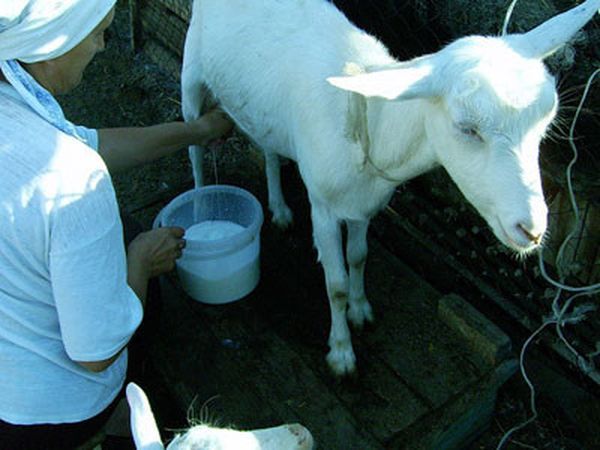
goat milk for pancreatitis
Goat's milk is a salvation for patients with pancreatitis with an allergy to cow's milk. This is a hypoallergenic product that has the ability to quickly neutralize hydrochloric acid, which is part of the gastric juice. The reaction proceeds quite calmly, without bloating, heartburn or belching.
Despite its excellent properties, goat's milk can be drunk for pancreatitis subject to the same restrictions as cow's milk. At the acute stage of the disease, it should be consumed 4–5 days after the attack. It is advisable to use it as part of ready-made dishes: liquid porridges, steam omelettes. When preparing, dilute with water in a 1:1 ratio. The main thing is to monitor the patient’s condition during an exacerbation of pancreatitis. If heaviness, increased gas formation and pain, as well as loose stools are observed, goat milk should be temporarily avoided.
Oat milk
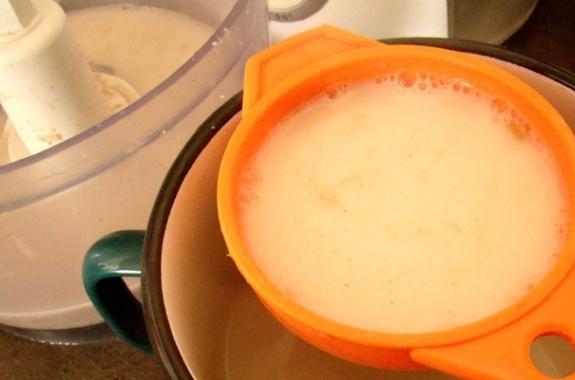
This is one of the most effective therapy options, although it is quite labor-intensive. Take one hundred grams of unrefined grain, rinse, add 1.5 liters of water and put on fire for about an hour. After 30-40 minutes, when the oats become soft, knead them directly in the pan. You can grind it using a blender or meat grinder.
Then cook for another 20 minutes. Transfer the finished raw materials into a fine strainer or gauze and drain the liquid into a glass container. In consistency and appearance, it resembles cow's milk and has a lot of healing properties. Drink half a glass three times a day. The product should be stored in the refrigerator for no more than two days. Oats for the treatment of the pancreas in this variation exhibit anti-inflammatory and bactericidal effects.
Is it possible to eat cheese if you have pancreatitis?
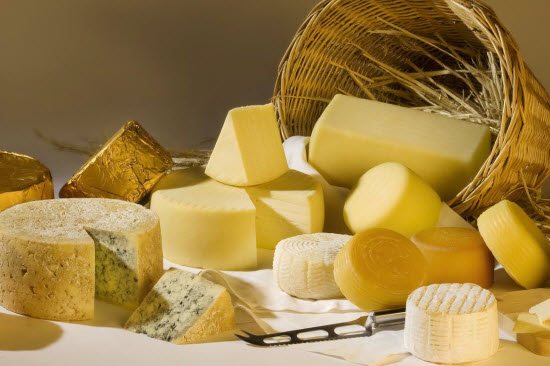
Cheese is a source of essential amino acids and protein of animal origin, which, importantly, is easily digestible. It contains microelements, vitamins, nutrients, milk fat, etc. The variety of varieties amazes even the richest imagination. Thanks to the unique cooking technology, the product is absorbed almost completely. But is it possible to have cheese for pancreatitis? Nutritionists say that cheese is not only possible, but also should be included in the daily menu of patients with inflamed pancreas. But not everyone is suitable for use.
In acute pancreatitis, cheese, which is considered a dense product, is contraindicated. Due to the abundance of fats and extracts contained in its composition, the secretion is stimulated, which goes against the rules of the first days - cold, hunger and peace.
Upon reaching remission, usually this is at least a month from the moment of inflammation, cheese is gradually added to the menu (no more than 15 grams), starting with soft varieties. The criteria that are considered mandatory are that the product is not spicy, fatty and/or salty. Harder cheeses are consumed provided that there are no negative reactions from the body to it. The daily norm should not exceed 100 grams.
Fat content (from 1.5 to 60%), raw materials (goat's, sheep's, cow's milk), the ratio of BJU (proteins, fats and carbohydrates), the presence of spices in the composition and other features distinguish cheese varieties from each other. According to gastroenterologists, not all of them are harmless for those who suffer from pancreatitis. What kind of cheese is good for pancreatitis?
An absolute taboo is imposed on the following cheeses:
- Melted, since they contain large quantities of salts, dyes and flavors.
- Cheeses are semi-smoked and smoked, since this type of food processing negatively affects the condition of the gland due to the excessive content of salts and harmful additives.
- Hard cheeses are inherently fatty. They are also too dense and rough, so they are undesirable to use even for chronic pancreatitis.
- Gourmet cheeses covered with mold.
- Cheeses with various additives in the form of herbs, spices, pieces of nuts, etc.
Nutritionists urge you to carefully study the label before purchasing. Pay special attention to the fact that it is cheese and not a cheese product, there is a big difference between them. In particular, cheese products contain preservatives, vegetable fats and flavorings.
Give preference to those cheeses whose fat content does not exceed 30%. In this matter, the lower the better. The appearance of the cheese is no less important. For example, it should not have dried edges, and its packaging should not be damaged. If you notice mold or other imperfections, don't risk your health and choose another one.
Among the semi-hard ones, “Russian” is recommended, among the soft ones – “Adygeisky”, as well as feta cheese and ricotta (necessarily unsalted), feta (low-fat), mozzarella and burata.
Healthy drinks
We bring to your attention a couple more delicious medicines. You will need whole grains and a liter of purified hot water (filtered). Combine the two ingredients and let sit for half an hour. Strain and drink within 15 minutes. Before meals, take a glass with the addition of natural honey.
The second version of the decoction: pour 50 g of grains with husks into 500 ml of water, boil for several minutes. Take the same as the first decoction. Treatment of the pancreas with oats (the recipes for which are simple and safe) is appropriate for a sluggish form. It is recommended to use the product for low acidity, poor digestion and flatulence.
Diet dishes
Milk for pancreatitis is used to prepare dietary dishes.
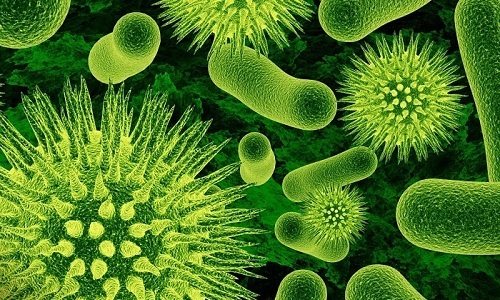
Fresh milk should be completely avoided because it may contain bacteria that cause fermentation. As a result, seizures, diarrhea and flatulence are possible.
Allowed dairy dishes for pancreatitis are milk soups and porridges, puddings and soufflés, curd spreads and casseroles, milk jelly and tea with milk.
With the addition of milk, you can cook various first courses allowed for pancreatitis.
The ingredients can be cereals (rice, semolina, buckwheat, oatmeal), vegetables and fruits.
Here is a recipe for a delicious soup with semolina and carrots: wash, peel, chop 250 g of carrots, add 50 g of water and simmer until tender. Then transfer to a blender and grind. Bring 0.5 liters of milk to a boil, gradually add 3 tbsp, stirring occasionally. l. semolina and cook for 10 minutes. Mix with carrot puree, add sugar, salt and simmer for another 5 minutes. Season the milk soup with 1 tsp. butter.
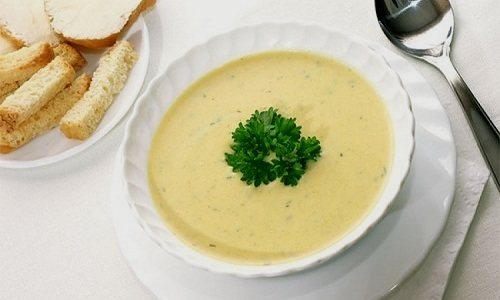
For pancreatitis, milk porridges are useful: rice, buckwheat, oatmeal, semolina. The first allowed porridge after the attack is over is rice porridge. When preparing it, milk is mixed with water and salt, sugar and butter are not added. Then they move on to other cereals, such as semolina. Milk is also diluted with water in equal proportions.
Medicinal jelly
It is worth noting that if you have pancreatitis, you must follow a diet, otherwise no homeopathic medicines will help. Fatty meat and fish broths, canned foods, everything salty, bitter, pickled, fried and sweet are definitely excluded from the diet. The list of prohibited foods is extensive, but this does not mean that you will have to starve. A little later, permitted products for pancreatitis will be given.
In combination with dietary nutrition, doctors recommend preparing a jelly drink from sprouted grains. It is done simply, even a beginner can handle it: sort out a kilogram of oats, rinse, immerse in water so that the liquid covers the raw material by 1 cm. Cover the top with gauze and place in a dark place for 24 hours. The next day you will see the grains growing.
They need to be washed again, transferred to a napkin to drain off excess liquid, and ground into powder. From the resulting flour we take 15 g, dilute it in ¼ glass of cold water, add 200 ml of hot water, put it on the stove and let it simmer for three minutes. Leave it covered for half an hour, take it in the morning, before meals.
The product relieves pain, removes toxins, and restores the activity of the gastrointestinal tract. Treatment and cleansing with oats is the best alternative to chemical medications. In addition, the herbal remedy does not cause side effects.
Is it possible to drink
Milk must be included in the diet of a patient with pancreatitis, unless he has lactose intolerance or allergies. Otherwise, cow's milk is replaced with soy milk.
There are rules for including milk in the treatment menu. It should be fresh and non-greasy. The daily intake is also limited. You should also know that milk can enhance the fermentation process inside the intestines, so for pancreatitis it is preferable to mix it into other dishes.

In acute form
During the acute phase, milk cannot be consumed in its pure form: milk fat and lactose increase the load on the inflamed pancreas, forcing it to work harder. This can provoke an attack or other negative manifestations: pain, nausea, flatulence, diarrhea.
On the other hand, a lack of enzymes in acute pancreatitis does not allow milk to be absorbed by the body.
Therefore, it should be abandoned as a drink in favor of milk jelly or milk soup. They are allowed to be consumed starting 2-3 days after the attack, but little by little. To prepare them, skim milk is used. And a product with a fat content of up to 2.5% is included in the menu when remission occurs, adding it to other dishes. Higher fat milk must first be diluted with water.
In the chronic stage
For chronic pancreatitis, the rate of milk consumption per day is 100-140 ml. It is distributed evenly: for example, 50 ml in milk soup, 30 ml in an egg white omelet and 60 ml in milk oatmeal. You can add milk to the puree, but the total amount should not exceed the figures given.

If whole milk still causes discomfort, replace it with goat milk. It contains more useful substances and contains lysozyme, which has antibacterial, antispasmodic and healing effects, which will have a beneficial effect on the inflamed pancreas. When consuming such milk, you do not need to exceed the daily norm of 1 liter. Another type of milk allowed for inflammation of the pancreas is baked milk. It is drunk similarly to goat's.
During exacerbation of the disease
During an exacerbation, milk is not taken as food. Only 2 days after the attack is over, milk porridges cooked with low-fat milk (up to 2.5%) are allowed. On days 7-8, steam omelettes and low-fat cottage cheese are introduced into the diet. When the period of remission begins, the menu includes natural yogurt and low-fat sour cream.
Milk jelly
We prepare it from a liter of natural milk and a glass of unprocessed grains. Boil the mixture over low heat or simmer in the oven for three hours. We separate the whey from the pulp, grind it, and filter it again. The resulting thick liquid must be combined with a milk solution. The serving is for a day. For sweetness, add a little honey.
Bee products are widely used in Ayurvedic and folk therapy, especially milk, propolis, and wax. Treatment of the pancreas with propolis and oats is carried out by homeopaths. The fact that these components have antimicrobial and antiseptic activity is a proven medical fact that cannot be doubted.
Milk and dairy products during an exacerbation period
It is not advisable to introduce dairy products into the diet until 3 days have passed from the moment of exacerbation of pancreatitis. After waiting the prescribed period, it is allowed to eat liquid porridge cooked in milk (fat content not exceeding 2.5%) and water in equal proportions.
After 5 days from the moment of exacerbation, you can diversify the menu with low-fat cottage cheese (you should start with 50 grams per day, gradually increasing the portion to 100 grams). Also during this same period, it is recommended to introduce steamed omelet (with milk diluted with water) into the diet.
After about 2 weeks, provided that positive dynamics are maintained, the composition and quantity of permitted dairy products expands and increases: kefir with 1% fat content, unsalted butter, which can be added to dishes daily (no more than 5 grams per day). After about 2 months, with the onset of a period of stable remission, the menu of a patient with pancreatitis becomes even more varied.
Proper nutrition for pancreatic pathology
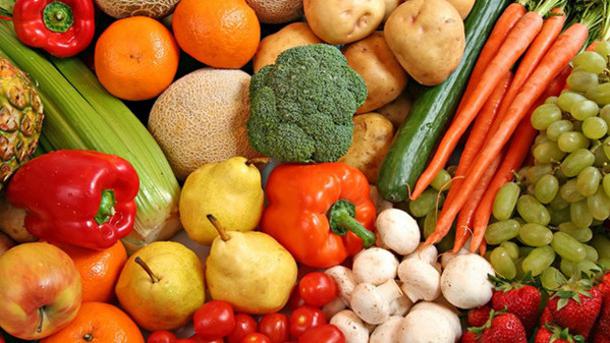
We found out what should be removed from the menu. So lovers of harmful products will have to endure for the sake of their own well-being. Eat simple dishes, diversify your diet with cereals such as rice, buckwheat, oats. For the treatment of the pancreas, these grains are indispensable. It is useful to eat boiled and baked dishes (lean meat, poultry), fermented milk products, dried fruits, berries, and vegetables.
It is important to reduce the amount of sugar, give up alcohol and smoking. During the period of remission (calm), it is recommended to eat small portions - at least five times a day. Properly selected dishes and folk recipes will help stabilize the condition and alleviate the clinical picture. Now it is clear why oats are useful for treating the pancreas and how it speeds up recovery.
Goat's milk in the chronic stage
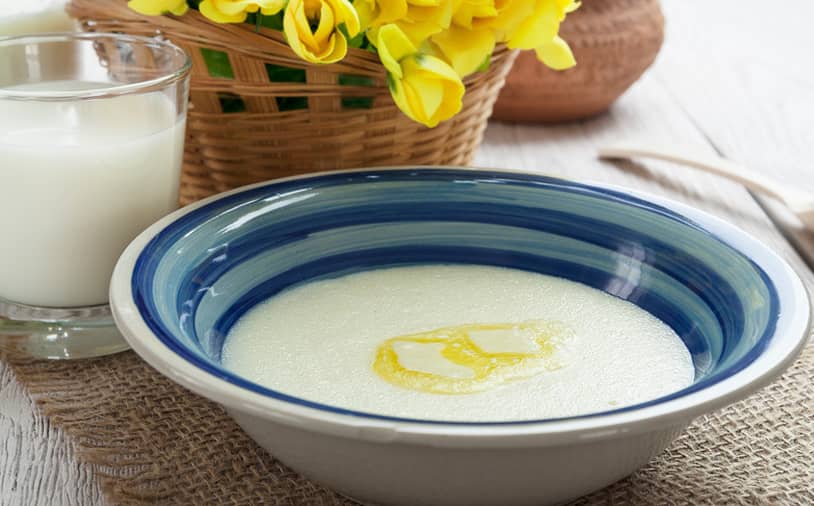
goat milk porridge
For chronic pancreatitis, it is better to add goat's milk as an ingredient to a variety of dishes: soups, cereals, sauces, casseroles, puddings, omelettes and others. Fresh or boiled milk for a few minutes is prescribed for pancreatitis and cholecystitis if there have been no acute attacks for twelve months or more.
It should be introduced into the diet gradually. First, drink 50 ml per day of diluted milk in a ratio of 1:2. Then dilute in a 1:1 ratio. The next step is to drink whole milk. This is followed by a gradual increase in the daily volume by 20 ml per week. You should stop at 200 ml per day. Nutritionists consider this amount sufficient.
First, you should consult your doctor. Then, gradually performing all the steps, analyze your condition and well-being. If signs of lactase deficiency appear, you should stop drinking milk and wait a while. There is no need to introduce two or more new foods into your diet at the same time. During the habituation stage, goat milk should be consumed separately from other foods or with a piece of dried bread.
If a person suffering from chronic pancreatitis can drink 200 ml of goat milk daily, this will provide him with the daily requirement of vitamins A, B, C, D, E.
The benefits of milk and the negative aspects of consumption
Milk for pancreatitis is not considered an approved product. Especially with a high percentage of fat content. There is nothing surprising here, since in case of illness, fats and carbohydrates are prohibited and reduced to a minimum level. If you look at the composition of milk liquid, you will notice that in addition to vitamins, the chemical composition also contains fats.
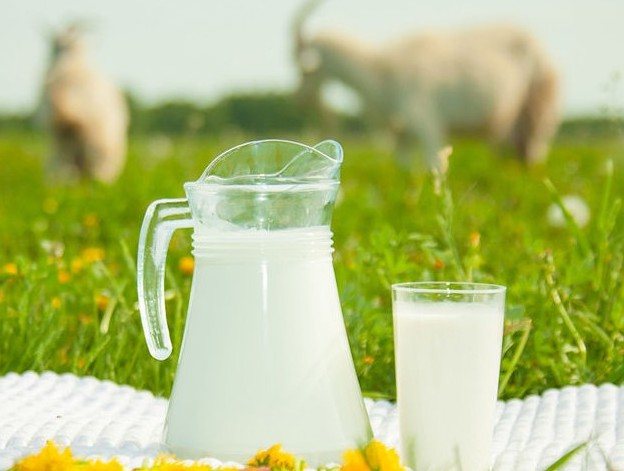
Milk for pancreatitis is not considered an approved product, but its benefits are undeniable
Comparing cow's milk with store-bought or goat's milk, you can notice the difference. But not in the presence of any microelements, but in percentage:
| element | Goat milk | Cow's milk |
| calorie content | 52 kcal | 65-68 |
| Linoleic, linolenic and oleic acid | Twice as much as cow's | 0,09/0,03/0,78 |
| Cholesterol, ash, protein | O.01/0.8/5.2 | 0,01/0,70/2,79 |
| Fats, lactose | Up to 7% fat and 4.0 | 3.50% and 4.69% |
| Minerals (potassium, calcium, magnesium, phosphorus) | 156/ 136/ 23/ 110 | 146/ 120/ 14/ 90 |
| Vitamins | All known types of vitamins | 50 titles. All vitamins are beneficial for the body. there are both A and C, and all group B, including B 12 |
| Folacin, choline | 0.008/ up to 25% | 0, 005/ 23,6/ |
In fact, this is only a third of all the substances that are in the whole product. The table shows only those with a higher percentage. Any dairy product contains:
- molybdenum;
- zinc and chromium;
- selenium and copper;
- beta-carotene and many other substances.
Need to know! Doctors are still debating the usefulness of the product. Since liquid of animal origin has a positive effect. It copes well with germs and other substances that spoil the immune system. For example, a cold or sore throat.
Propolis with milk
Propolis with milk has long been used for the treatment and prevention of pancreatitis. For preparation you need 1 glass of milk (250 ml) and a teaspoon of propolis. Grind propolis in any convenient way. Boil the milk and pour in the crushed propolis, mixing it thoroughly in a glass. Strain the infusion through doubled gauze. Let the drink sit for about 10 minutes until a waxy layer forms on the surface. Remove the top layer and the drink is ready to drink.
The drink should be drunk warm, before bed. Propolis with milk relieves inflammatory processes in the pancreas, increases appetite, normalizes metabolism, and also has a beneficial effect on the mucous membranes of the gastrointestinal tract.
